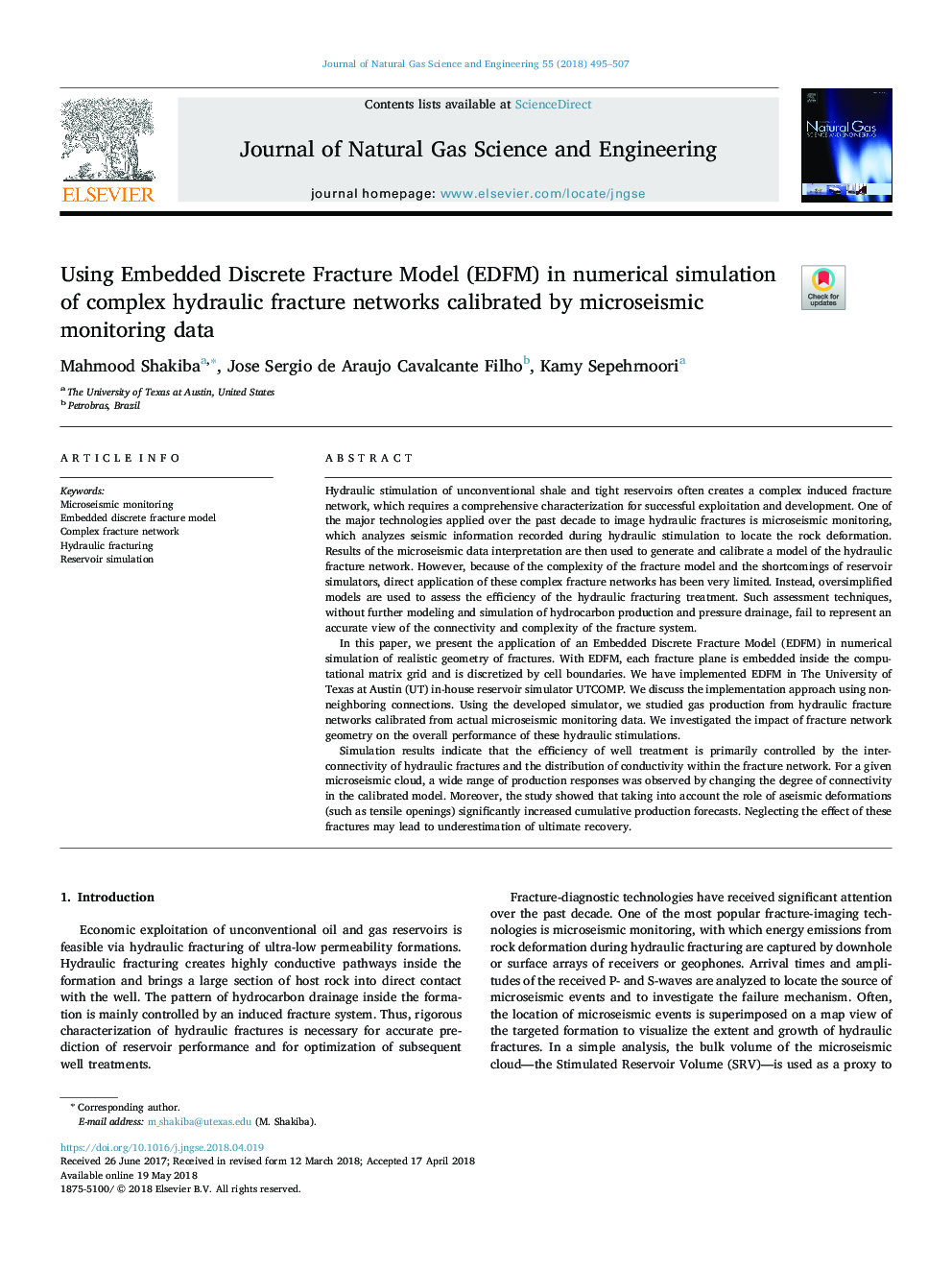| Article ID | Journal | Published Year | Pages | File Type |
|---|---|---|---|---|
| 8128026 | Journal of Natural Gas Science and Engineering | 2018 | 13 Pages |
Abstract
Simulation results indicate that the efficiency of well treatment is primarily controlled by the interconnectivity of hydraulic fractures and the distribution of conductivity within the fracture network. For a given microseismic cloud, a wide range of production responses was observed by changing the degree of connectivity in the calibrated model. Moreover, the study showed that taking into account the role of aseismic deformations (such as tensile openings) significantly increased cumulative production forecasts. Neglecting the effect of these fractures may lead to underestimation of ultimate recovery.
Keywords
Related Topics
Physical Sciences and Engineering
Earth and Planetary Sciences
Earth and Planetary Sciences (General)
Authors
Mahmood Shakiba, Jose Sergio de Araujo Cavalcante Filho, Kamy Sepehrnoori,
